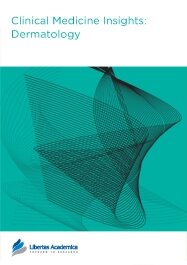

Publication Date: 19 Jun 2012
Type: Perspective
Journal: Clinical Medicine Insights: Dermatology
doi: 10.4137/CMD.S9496

This paper describes the etiological organism causing a new human infection, ie, Yan (also known as Morgellons) disease. Colored threads, black speck-like material, and granules are formed within and/or on the skin surface. The organism has four main morphological forms, ie, tube-shaped fibers, amorphous tuber masses, fibrous roots, and seeds. Brilliant red and blue autofluorescent pigments similar to phycobiliproteins have been observed. The seed form of the organism grows in solid potato and blood agar as pointed masses, and in potato broth as interconnecting bundles of fibers. The seed form of the organism was grown in a hamster/mouse model as light brownish tuber masses interconnecting with fibrous roots. The main symptoms for the patient are of biting, stinging, and a “shooting” sensation from the skin caused by the sharp and pointed ends of the seed form of the organism.
PDF (2.60 MB PDF FORMAT)
RIS citation (ENDNOTE, REFERENCE MANAGER, PROCITE, REFWORKS)
BibTex citation (BIBDESK, LATEX)
I highly recommend publication in Libertas Academia journals. The entire submission, review and publication process for our article in Clinical Medicine Insights: Dermatology was easy and quick. The reviews were very professional and helpful and the publication fees were reasonable. We also appreciate that our article is available online free of charge to anyone interested in it.

All authors are surveyed after their articles are published. Authors are asked to rate their experience in a variety of areas, and their responses help us to monitor our performance. Presented here are their responses in some key areas. No 'poor' or 'very poor' responses were received; these are represented in the 'other' category.See Our Results
Copyright © 2013 Libertas Academica Ltd (except open access articles and accompanying metadata and supplementary files.)
FacebookGoogle+Twitter
PinterestTumblrYouTube